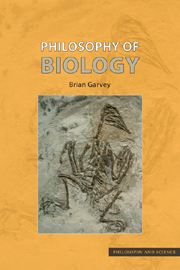Book contents
- Frontmatter
- Contents
- Acknowledgements
- Introduction
- 1 The argument in Darwin's Origin
- 2 The power of genes
- 3 Units of selection
- 4 Panglossianism and its discontents
- 5 The role of development
- 6 Nature and nurture
- 7 Function: “what it is for” versus “what it does”
- 8 Biological categories
- 9 Species and their special problems
- 10 Biology and philosophy of science
- 11 Evolution and epistemology
- 12 Evolution and religion
- 13 Evolution and human nature
- 14 Biology and ethics
- Notes
- Further reading
- Bibliography
- Index
7 - Function: “what it is for” versus “what it does”
- Frontmatter
- Contents
- Acknowledgements
- Introduction
- 1 The argument in Darwin's Origin
- 2 The power of genes
- 3 Units of selection
- 4 Panglossianism and its discontents
- 5 The role of development
- 6 Nature and nurture
- 7 Function: “what it is for” versus “what it does”
- 8 Biological categories
- 9 Species and their special problems
- 10 Biology and philosophy of science
- 11 Evolution and epistemology
- 12 Evolution and religion
- 13 Evolution and human nature
- 14 Biology and ethics
- Notes
- Further reading
- Bibliography
- Index
Summary
It was perceived very early in the history of biology that living things have parts that are for things. Aristotle (arguably the founder of biology) fully appreciated it: “In dealing with respiration we must show that it takes place for such or such a final object; and we must also show that this and that part of the process is necessitated by this and that other stage of it” (On the Parts of Animals: Bk I, pt 1).
The English word “teleology” is derived from the Greek word “telos”, which may be translated as “purpose”. What does this mean when applied to living things? When we think about a spider building a web, or a squirrel gathering nuts, we cannot help but see purposefulness in these activities. The spider builds a web in order to catch flies; the squirrel gathers nuts in order to secure enough food for the winter. By contrast, we would not say that the acid eats away at the metal in order to bring about some end; the process merely has an end result, and that is all. When it comes to the activities of animals and plants, it seems much more natural to say that they are carried out in order to bring about some end. Why does this idea have such obvious appeal?
Analogies between human beings and other living things
One reason for the appeal may be because of apparent analogies between other living things and ourselves. We know that human beings’ activities are (at least very often) purposeful. Often it is pretty obvious why people are doing what they are doing; if someone is putting on a raincoat, she is presumably doing so in order to avoid getting wet. But when we look at the activities of animals (leaving plants aside for the moment), they seem to be doing things that we also do: they eat, sleep, fight, run away from danger and so on.
- Type
- Chapter
- Information
- Philosophy of Biology , pp. 108 - 126Publisher: Acumen PublishingPrint publication year: 2007

